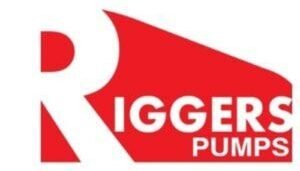Importance of High-Pressure Chiller Tube Cleaning Process
Chiller tubes are a vital component of chiller systems, which are used to cool water or other fluids in industrial, commercial, and HVAC applications. Over time, these tubes accumulate scale, sediment, biofilm, and other contaminants that hinder heat transfer, reduce efficiency, and increase energy consumption. Regular cleaning of chiller tubes is crucial for maintaining optimal system performance. High-pressure cleaning is one of the most effective methods for cleaning chiller tubes, as it removes these contaminants efficiently without damaging the tubes.
Here are the key reasons why the high-pressure chiller tube cleaning process is essential:
1. Restoring Maximum Heat Transfer Efficiency
Chillers rely on a seamless heat exchange process between refrigerant and the cooling medium (typically water). However, contaminants such as scale deposits, biological growth, and sludge create an insulating barrier inside the tubes.
- Impact: Poor heat transfer leads to higher energy consumption and a decline in cooling efficiency.
- Solution: High-pressure cleaning effectively removes these obstructions, restoring optimal heat exchange and ensuring that chillers operate at peak performance.
- Example: A 1mm layer of scale can reduce heat exchanger efficiency by up to 40%, forcing compressors to work harder, leading to premature wear and higher operational costs.
2. Cutting Down Energy Consumption & Utility Costs
When chiller tubes become fouled, the system must work harder to compensate for poor heat transfer. This results in:
- Higher energy demand – Compressors and pumps run at higher loads.
- Increased runtime – The system struggles to meet cooling demands, causing longer operational hours
- Spikes in electricity bills – Facilities experience a significant rise in energy costs.
According to industry studies, chiller systems account for 40-60% of total energy usage in large facilities. Proper maintenance can cut energy costs by up to 30%.High-pressure tube cleaning optimizes heat transfer, reducing the workload on chillers and directly lowering energy consumption.
3. Preventing Expensive Repairs & Unexpected Downtime
Neglecting tube cleaning doesn’t just impact efficiency—it can lead to catastrophic system failures. When contaminants build up, they increase stress on critical components such as:
- Compressors – Overworked and prone to failure.
- Condensers – Reduced effectiveness, leading to overheating.
- Cooling Towers – Clogged water pathways decrease circulation efficiency.
- Failure Risks: If left uncleaned, these issues can result in system shutdowns, leading to unplanned maintenance, high repair costs, and significant production downtime.
- Solution: Regular high-pressure tube cleaning ensures smooth operations, reducing emergency breakdowns and extending the life of essential chiller components.
4. Extending Equipment Lifespan & Avoiding Premature Replacements
Fouled chiller tubes not only reduce efficiency but also accelerate material degradation due to:
- Corrosion & Pitting – Chemical deposits weaken tube walls.
- Erosion – Water velocity changes increase wear and tear.
- Leaks & Structural Failures – Lead to costly component replacements.
By removing harmful deposits without damaging tubes, high-pressure cleaning helps prevent structural weakening, protects equipment integrity, and extends the lifespan of chillers by several years.
5.Ensuring Consistent Cooling Capacity & Performance
Dirty chiller tubes create uneven cooling, causing fluctuations in temperature control in industrial processes, HVAC systems, and refrigeration units. This can lead to:
- Inconsistent climate control in commercial buildings.
- Poor cooling performance in critical manufacturing processes.
- Product spoilage risks in refrigeration-based industries.
- Solution: Regular high-pressure cleaning ensures that chiller tubes remain unobstructed, enabling the system to deliver its full cooling capacity, even under heavy load conditions.
6. Mitigating Health & Safety Risks (Legionella Prevention)
In water-cooled systems, biofilm, algae, and bacteria can accumulate inside chiller tubes. This creates a breeding ground for:
- Legionella Bacteria – The cause of Legionnaires’ disease, a serious respiratory illness.
- Mold & Fungi – Lead to air quality issues in HVAC applications.
- Microbial Corrosion – Causes hidden structural damage inside tubes.
- Fact: According to the CDC, outbreaks of Legionnaires’ disease have been linked to poorly maintained cooling systems.
High-pressure cleaning effectively eliminates biological contaminants, reducing health risks and ensuring compliance with safety standards.
7.A Sustainable & Eco-Friendly Cleaning Solution
Unlike chemical-based cleaning, high-pressure water jetting:
- Uses zero toxic chemicals – Eliminates environmental hazards.
- Reduces wastewater concerns – No need for expensive disposal.
- Protects personnel from exposure to harsh chemicals.
For organizations focused on sustainability and compliance, high-pressure cleaning is a responsible alternative that aligns with environmental regulations.
8. Faster Maintenance with Minimal Downtime
Unlike mechanical brushing or chemical flushing, high-pressure cleaning is a quicker, non-invasive solution.
Advantages:
- Reduces downtime – The system returns to operation faster.
- Requires no major disassembly – Simplifies maintenance.
- Ideal for 24/7 operations – Less disruption to critical processes.
This makes it an efficient maintenance choice for industries that rely on uninterrupted cooling operations.
9. Meeting Energy Efficiency Standards & Regulations
Many industrial and commercial facilities must adhere to energy efficiency benchmarks, such as:
- ASHRAE (American Society of Heating, Refrigerating and Air-Conditioning Engineers) standards.
- EPA energy regulations for industrial cooling systems.
- LEED (Leadership in Energy and Environmental Design) certifications.
By keeping chiller tubes clean, organizations can reduce carbon footprints, qualify for energy incentives, and ensure regulatory compliance.

